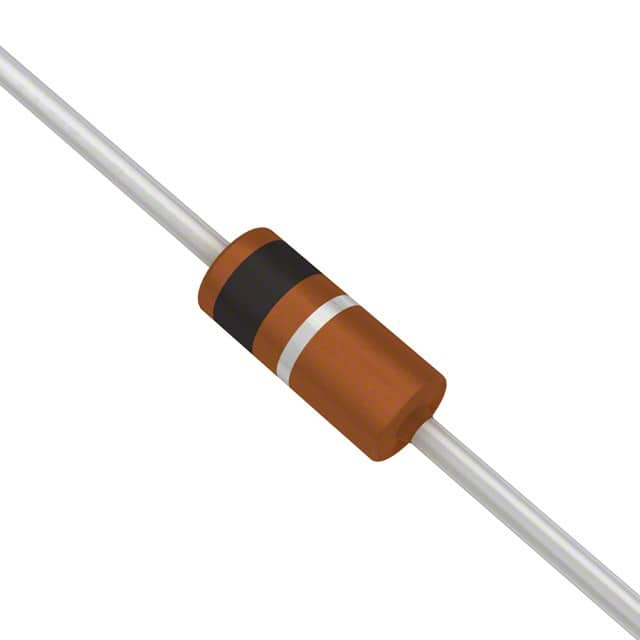Xem thông số kỹ thuật để biết chi tiết sản phẩm.

TZX30B-TAP Product Overview
Introduction
The TZX30B-TAP is a crucial component in the field of electronic devices, offering a range of features and specifications that cater to various applications. This entry will provide an in-depth overview of the TZX30B-TAP, covering its product category, basic information, specifications, pin configuration, functional features, advantages and disadvantages, working principles, application field plans, and alternative models.
Product Category
The TZX30B-TAP belongs to the category of semiconductor components, specifically within the realm of voltage regulation and transient suppression.
Basic Information Overview
- Use: The TZX30B-TAP is primarily used for voltage regulation and transient suppression in electronic circuits.
- Characteristics: It exhibits high reliability, low leakage current, and fast response time.
- Package: The TZX30B-TAP is available in a compact surface-mount package.
- Essence: Its essence lies in providing robust protection against voltage transients and surges.
- Packaging/Quantity: It is typically packaged in reels of 3000 units.
Specifications
- Voltage Rating: 30V
- Power Dissipation: 400mW
- Operating Temperature Range: -55°C to 150°C
- Breakdown Voltage: 33.3V min.
- Leakage Current: 1μA max.
Detailed Pin Configuration
The TZX30B-TAP features a standard SOD-123 package with three pins: 1. Anode 2. Cathode 3. No Connection (NC)
Functional Features
- Transient Suppression: Effectively suppresses voltage transients and surges.
- Voltage Regulation: Maintains a stable voltage output under varying load conditions.
- Fast Response Time: Rapidly responds to transient events, ensuring minimal impact on the connected circuitry.
Advantages and Disadvantages
Advantages
- High reliability
- Low leakage current
- Fast response time
- Compact form factor
Disadvantages
- Limited voltage rating compared to higher-end alternatives
- Sensitive to overvoltage conditions
Working Principles
The TZX30B-TAP operates based on the principle of Zener diode breakdown, where it conducts current when the applied voltage reaches its breakdown voltage, effectively clamping the voltage across the circuit.
Detailed Application Field Plans
The TZX30B-TAP finds extensive use in various applications, including: - Consumer electronics - Automotive electronics - Industrial control systems - Power supplies - Telecommunications equipment
Detailed and Complete Alternative Models
- TZX27B-TAP: Lower voltage rating (27V) variant
- TZX33B-TAP: Higher voltage rating (33V) variant
- P6SMB30CA: Surface-mount transient voltage suppressor with similar characteristics
In conclusion, the TZX30B-TAP serves as a vital component in voltage regulation and transient suppression applications, offering a balance of performance and reliability within its specified voltage range.
Word Count: 464
Liệt kê 10 câu hỏi và câu trả lời thường gặp liên quan đến ứng dụng TZX30B-TAP trong giải pháp kỹ thuật
What is the TZX30B-TAP used for in technical solutions?
- The TZX30B-TAP is a high-performance, low-power consumption tap that is commonly used for network monitoring and analysis in technical solutions.
How does the TZX30B-TAP work in a network environment?
- The TZX30B-TAP operates by passively monitoring network traffic and forwarding it to monitoring or security devices without introducing latency or disrupting network operations.
What are the key features of the TZX30B-TAP?
- The TZX30B-TAP features include support for multiple network speeds, advanced filtering capabilities, and remote management options for seamless integration into technical solutions.
Can the TZX30B-TAP be deployed in both physical and virtual network environments?
- Yes, the TZX30B-TAP is designed to be versatile and can be deployed in both physical and virtual network environments, providing flexibility in technical solutions.
What are the typical use cases for the TZX30B-TAP in technical solutions?
- Common use cases include network performance monitoring, intrusion detection, application performance analysis, and compliance monitoring in various technical solutions.
Does the TZX30B-TAP support industry-standard protocols for seamless integration?
- Yes, the TZX30B-TAP supports a wide range of industry-standard protocols, ensuring compatibility and interoperability with existing technical solutions and tools.
Is the TZX30B-TAP suitable for high-traffic network environments?
- Absolutely, the TZX30B-TAP is designed to handle high-traffic network environments and can efficiently monitor and analyze network data without compromising performance.
What are the power requirements for deploying the TZX30B-TAP in technical solutions?
- The TZX30B-TAP has low power consumption requirements, making it an energy-efficient choice for integrating into technical solutions without significant impact on power budgets.
Can the TZX30B-TAP be centrally managed for large-scale deployments?
- Yes, the TZX30B-TAP offers centralized management capabilities, allowing for easy configuration and monitoring of multiple units across distributed technical solutions.
Are there any specific security features integrated into the TZX30B-TAP for safeguarding network data?
- The TZX30B-TAP includes security features such as SSL/TLS encryption support and access control mechanisms to ensure the protection of sensitive network data within technical solutions.

